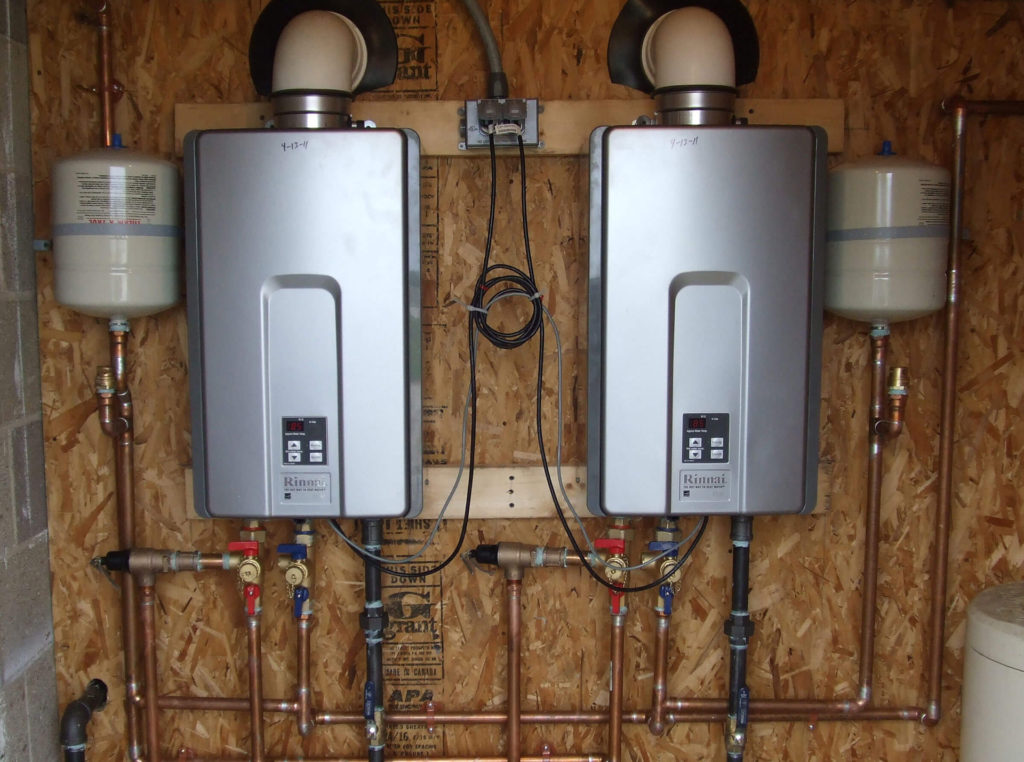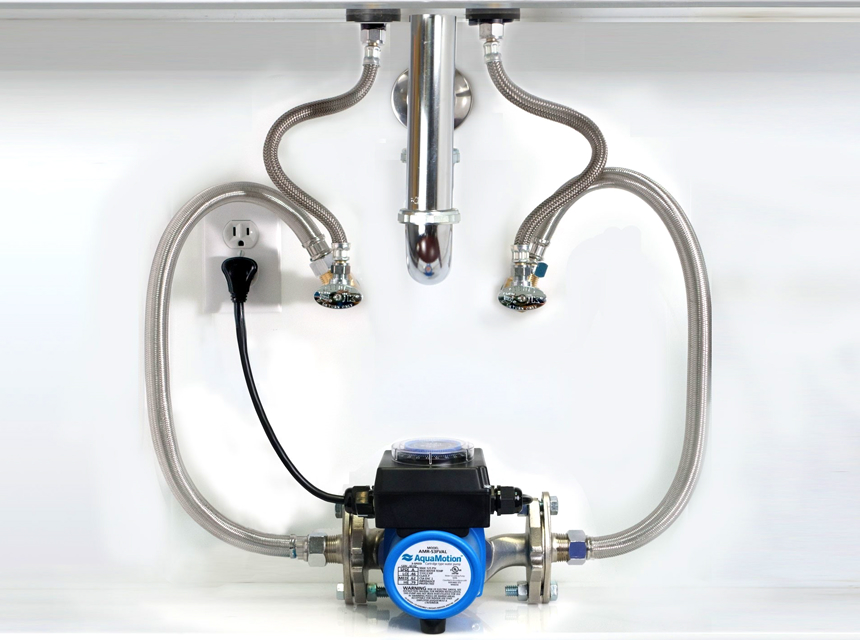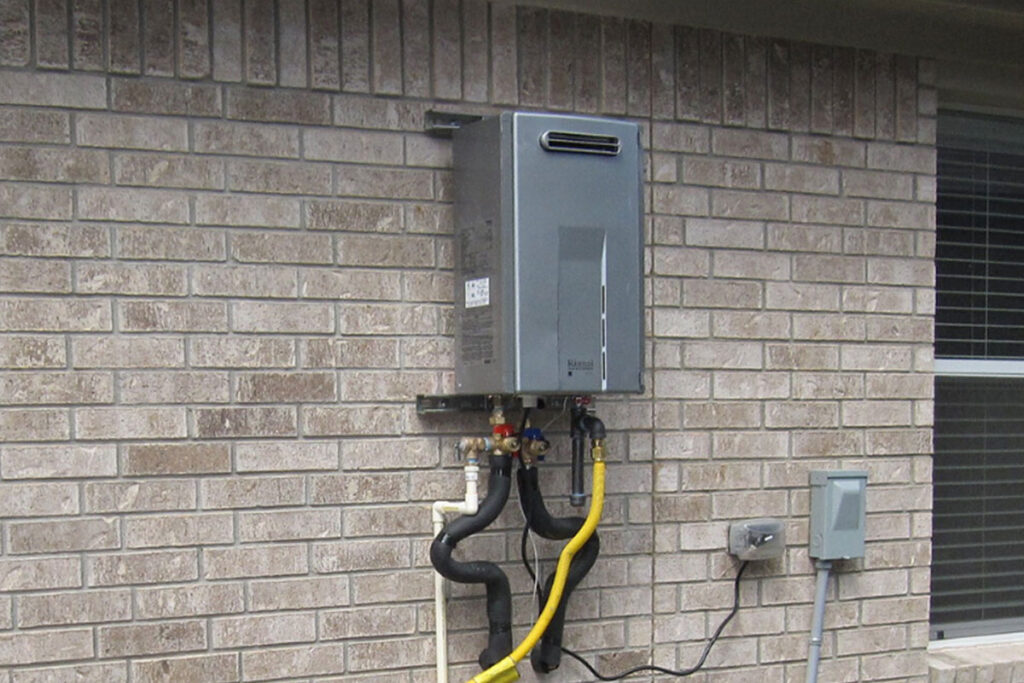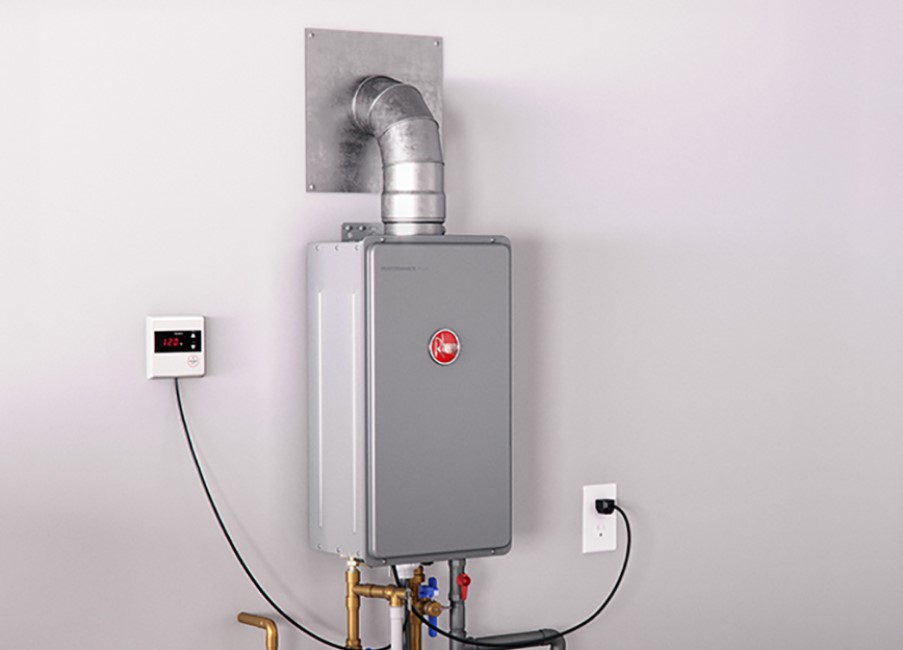

If you are among the rising number of people who have been asking “What size tankless water heater do I need?”, then you have come to the right place. These models are sought-after because they guarantee your household constant supply of hot water on demand. They are also low maintenance, compared to a standard water heater tank, and reduce your utility bills by up to 34% by heating only the amount of water required. Other advantages of tankless models are their compact size which saves space and their long lifespan which is twice as much as their traditional counterparts.
Before purchasing one, start by establishing your answer to these questions: what size tankless water heater do I need? What is my target temperature rise and maximum flow rate? How much water is needed for my household? Lastly, you need to consider the available power source to choose a matching model. In this article, we have provided comprehensive information that will help you answer those questions in detail.
Size matters when choosing a tankless heater because it is a reflection of heating capacity. You don’t want a smaller model that would not adequately heat the amount of water you need, or a larger one that will needlessly hike your energy bill. Below, we have explained how to size a tankless water heater and the factors that should guide you.
To choose the right size that will meet your demand, you should consider the quantity of water required by your household and the number and types of appliances your prospective tankless unit will be supplying with hot water so you can calculate the maximum temperature rise it can achieve at a given flow rate. This is in contrast with traditional models whose size is mainly determined by the size of your family.
Once you have listed all the hot water appliances that will be operating simultaneously, tally their flow rates Trusted Source Sizing a New Water Heater - Energy.gov Tankless or demand-type water heaters are rated by the maximum temperature rise possible at a given flow rate. Therefore, to size a demand water heater, you need to determine the flow rate and the temperature rise you’ll need for its application (whole house or a remote application, such as just a bathroom) in your home. www.energy.gov to get your target flow rate. Flow rate is calculated by GPM which refers to gallons per minute. For instance, shower heads are mandated to have a maximum flow rate of 2.5 GPM.
Check the manual of your hot water appliances for its flow rate or look up the model number online and then use a chart such as the one in the next section to estimate it.
Gas models also tend to be more powerful than electric tankless water heaters. We have elaborated on the pros and cons of each type of power source and how to calculate temperature rise further in the article.
So, how many tankless heaters do you need to provide you with instant hot water without consuming too much energy? Well, that will depend on the required water quantity supplied to some of these devices.
| Appliance | Flow Rate (GPM) |
| Shower head | 2.5 |
| Bathroom Faucet | 0.5 – 2.0 |
| Washing machine | 1.5 – 2.5 |
| Kitchen Faucet | 0.5 – 2.0 |
| Bathtub Faucet | 3.0 – 4.0 |
| Dishwasher | 1.0 – 2.0 |
According to the EPA Trusted Source Showerheads - EPA Did you know that standard showerheads use 2.5 gallons of water per minute (gpm)? Water-saving showerheads that earn the WaterSense label must demonstrate that they use no more than 2.0 gpm. The WaterSense label also ensures that these products provide a satisfactory shower that is equal to or better than conventional showerheads on the market. EPA worked with a variety of stakeholders—including consumers who tested various showerheads—to develop criteria for water coverage and spray intensity. All products bearing the WaterSense label—including water–efficient showerheads—must be independently certified to ensure they meet EPA water efficiency and performance criteria. www.epa.gov showering is one of the leading ways we use water in the home, accounting for nearly 17 percent of residential indoor water use – for the average family, that adds up to nearly 40 gallons per day. That’s nearly 1.2 trillion gallons of water used in the United States annually just for showering, or enough to supply the water needs of New York and New Jersey for a year! The United States Environmental Protection Agency (EPA) reports that an average family uses up to 40 gallons daily to shower, translating to approximately 17 percent of residential water consumption.
If you might be showering when the dishwasher and washing machine are running, then you will need a heater with at least 5 GPM which is the minimum size suitable for most households.
2.5 GPM (shower head) + 1.0 GPM (dishwasher) + 1.5 (washing machine) = 5 GPM (required tankless heater flow rate).
That output would also be ideal for two showers running concurrently. On the other hand, a model with flow rate of 2 GPM will suffice if it only feeds one bathroom faucet and one kitchen faucet which add up to 1 GPM.
Manufacturers will typically indicate the maximum GPM for their gas-powered tankless water heaters which ranges from 2 to 12 GPM. Instead of GPM, electric units use kW to indicate the maximum operating power.
Shower heads are regulated by federal and state authorities. For example, the maximum GPM for shower heads in Washington and California is 1.8 GP whereas Colorado and New York City allow a maximum of 2.0 GPM. Federal regulations Trusted Source Reduce Hot Water Use for Energy Savings - Energy.gov Faucets and appliances can use a lot of hot water, which costs you money. Look for ways to heat your water more efficiently and use less. www.energy.gov limit flow rate to 2.5 gallons per minute at a water pressure of 80 pounds per square inch (psi). There are also incentives provided by some communities to local residents when they install low-flow fixtures that save both water and energy.
Temperature rise is the amount of heat required to supply hot water to your household at the set temperature. It is derived from the difference in temperature between the water going into the heater and the hot water supplied by a tankless water heater.
If the water entering the heater is 38°F and your kitchen faucet connected to the waterless tank heater requires hot water at 110°F, then the temperature rise is 72°F. Faucets typically have temperatures ranging from 110° F to 120° F.
Expected Shower Temperature (110°F) – Incoming Water Temperature (38°F)
= Required Heater Temperature Rise (72°F)
Assuming a washing machine in this household has a flow rate of 1.5 GPM, you need a heater that will heat 1.5 gallons of water by 72°F per minute to achieve the required output.
Since different locations have varied temperatures, they also differ in the temperatures of their groundwater. While the average groundwater temperature in the U.S. is 57 °F, groundwater in Chicago is 47°F and South Florida’s can be up to 70°F. Keep this in mind as well as seasonal changes while calculating temperature rise to determine the best heater for your state.
To measure groundwater, you can use a thermometer or choose from the multiple ground temperature map versions online. If you still can’t get the correct temperature for your groundwater, some users recommend assuming a lower value of 40 to 50 degrees Fahrenheit to err on the side of caution. A lower temperature rise increases the effectiveness of a tankless water heater.
How many people live in your house? When and how often do they use hot water? This is one way you can find out how to size a tankless water heater with adequate output. If there are several people or appliances that will be using hot water at the same time, then you need a large size that can effectively meet that demand.
Check out this table Trusted Source Reduce Hot Water Use for Energy Savings - Energy.gov Average Hot Water Usage www.energy.gov by the United States Department of Energy on various appliances and their average consumption of hot water.
| Activity | Gallons per use | |
| Clothes Washer | 25 | |
| Shower | 10 | |
| Dishwasher | 6 | |
| Kitchen faucet flow | 2 per minute | |
| Bathroom faucet flow | 2 per minute | |
| Total daily average | 64 |
Use it to calculate the highest simultaneous usage possible in your house so you can establish how many tankless heaters you need.
The size of your unit will also be determined by whether it is supplying the whole house with hot water or just at the point of use? A whole house heater will obviously need to be more powerful. On the other hand, you may install small or mid-sized heaters for the shower, a kitchen faucet, or only the washing machine.
Tankless water heaters are either electric or gas-powered. In terms of heating capacity, gas heaters are generally twice as effective and durable as electric models. This is why gas is the preferred choice for supplying hot water to whole houses. It is also better for low-temperature groundwater which requires a powerful heater to raise temperature for the hot water distributed to outlets.
Comparatively, electric water heaters are more suitable when there are few hot water appliances, warm incoming water, low GPM requirements, and point of use applications which don’t require a unit with voluminous output.
Consider the cost and availability of the power source. Gas products are expensive but they may be cheaper or expensive in the long run, depending on the region you reside. Gas models are powerful and durable but they require venting, piping and gas to install, which adds up to the initial cost. Electric heaters are cheaper and easy to install. However, they are prone to outages and few entry-level models can match the high volume of hot water supplied by gas-powered heaters. They also last for 7 to 10 years compared to gas-powered heaters which can serve you for a minimum of 20 years before needing replacement.
Ultimately, the decision will be influenced by your own heating needs and preferences.
We are now going to provide two different scenarios that will better illustrate the factors that come into play when choosing how many tankless heaters you need for your situation.
To figure out how to size a tankless water heater for a family of four, assess how many hot water devices might be operating simultaneously. Then calculate the GPM of each device and the sum will be the required maximum GPM.
Let’s take a likely scenario of a day when everyone is home. Assume there are two showers, one for the parents and the other for the kids. If one parent and one child are showering in different rooms, and the other parent is in the kitchen making breakfast while running the dishwasher, the total GPM will be calculated as follows:
2.5 x 2 GPM (2 shower heads) + 2.0 GPM (kitchen faucet) + 1.5 GPM (dishwasher) = 8.5 GPM (required tankless heater flow rate).
After getting the heater’s required GPM, we now need to find out its required temperature rise. If they live in cold Alaska, then the applicable ground water temperature will be 35° F. If faucet temperature is 110° F,
110° F (desired temperature) – 35° F (Alaska groundwater temperature) = 75° F (required heater temperature rise).
The ideal tankless water heater for this family will, therefore, need to be equipped to heat 8.5 GPM of water at 75° F per minute to meet the demand.
Alaska has the coldest winters Trusted Source Where Are The Coldest Low Temperatures In Summer: Alaska Or The Lower 48? - Forbes Alaska is cold, very cold. By almost any measure of coldness, Alaska far surpasses any portion of the Lower 48 states (Contiguous U.S.). Alaska has the coldest winters, the coldest summers, the longest winter, the most freezing degree days, and on and on. Temperatures in the -30°s and -40°s are a near daily occurrence from November through March in the interior portion of the state. There is a very simple reason for this. Alaska is much farther north than the Lower 48 and receives much less solar energy. www.forbes.com and summers in North America, so we can use the example above to calculate how to size a tankless water heater for a couple living in the northern region. One shower for the couple, a dishwasher, kitchen and bathroom faucet translate to the following GPM and temperature rise:
2.5 GPM (shower head) + 1.5 GPM (dishwasher) + 2.0 GPM (kitchen faucet) + 2.0 GPM (bathroom faucet) = 8 GPM (required heater flow rate).
We will use the same equation we used in the previous section to calculate the required heater temperature since our examples are based in the same area, which gives us temperature rise of 75° F.
The right size for this couple is a unit that can overcome 75° F temperature difference to heat 8 gallons of water per minute.
Water forms a sizeable portion of a household’s expenses, so if you are seeking to trade your 50-gallon water tank for an efficient model and you’re wondering, “How many tankless heaters do I need?”, we are here to help out.
First, remember that tankless units heat water on demand unlike tanks that hold hot water in storage. Secondly, the climate of the area you live in will affect the groundwater or inlet water temperature and subsequently, your heater’s temperature. This is why colder areas need a unit with high capacity to match the low-temperature inlet water.
A great replacement would be the gas-powered Takagi T-H3-DV-N which boasts of multiple features and is capable of the temperature rise required to feed hot water to 4 bathrooms in cold regions. If you prefer an efficient electric unit, consider EcoSmart ECO 27, a 27-kW efficient heater with temperature range of 80°F to 140°F and output of between 2.7 and 6.5 gallons of hot water per minute. You also get to save 50% on energy. Both options are suitable replacements for a 50-gallon tank.
We have answered the “how many tankless heaters do I need” question for families of different sizes so you can match the size of yours to a model tailored to meet your water needs. We have also outlined all the factors that will help you size your ideal tankless water heater, and provided our recommendations for both electric and gas-powered products.





